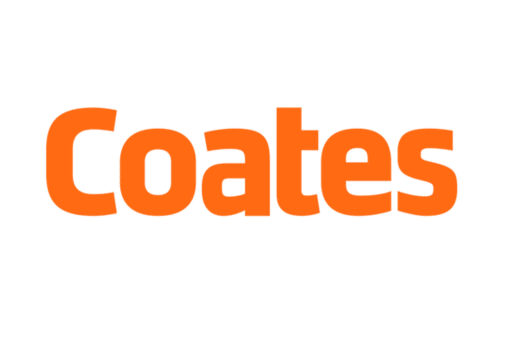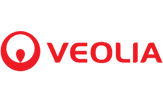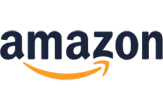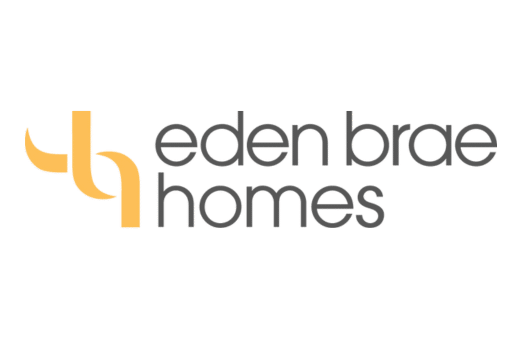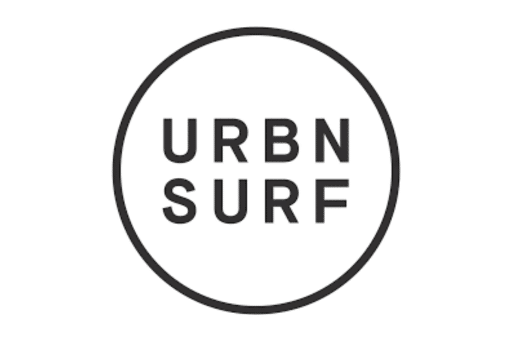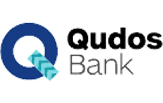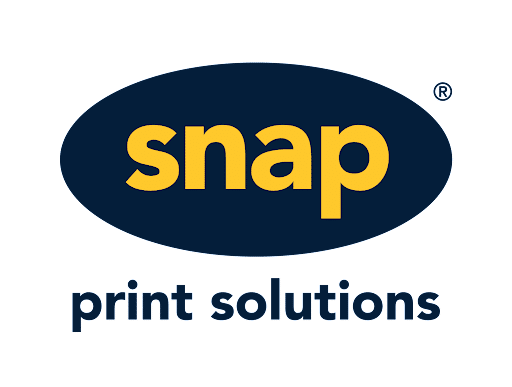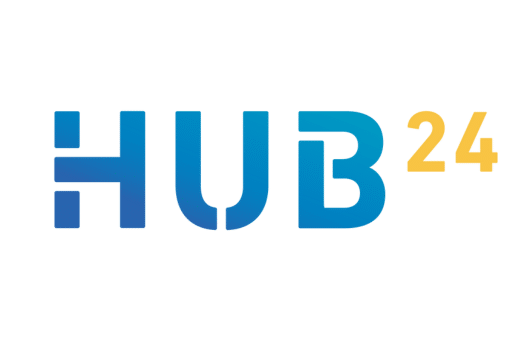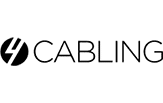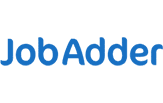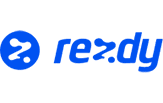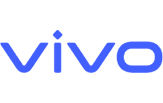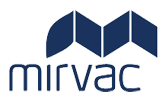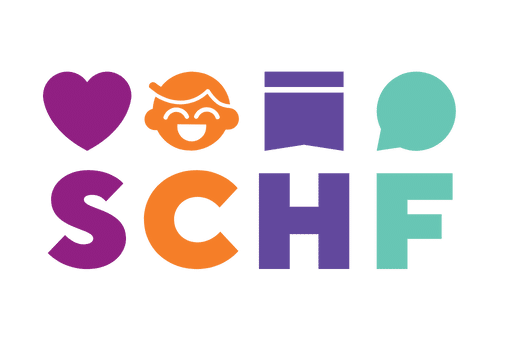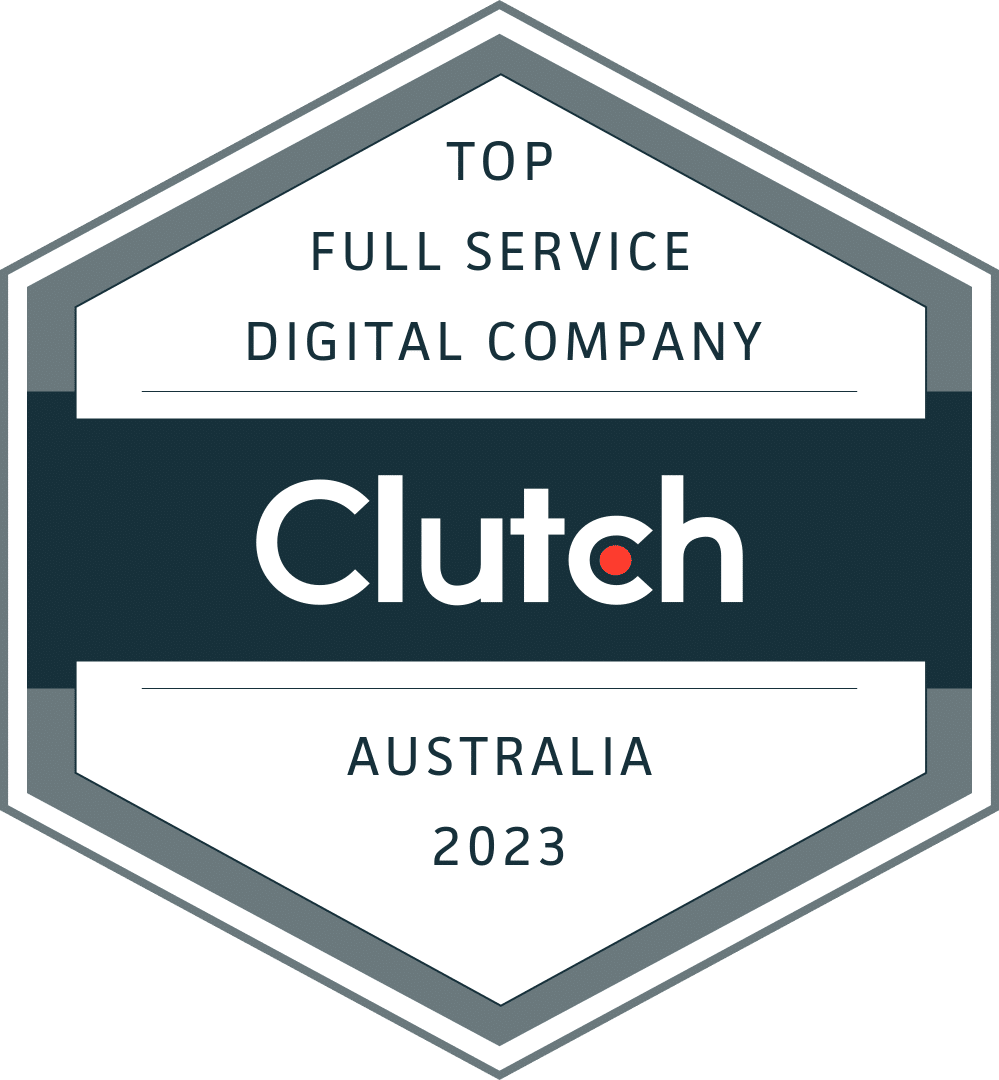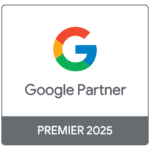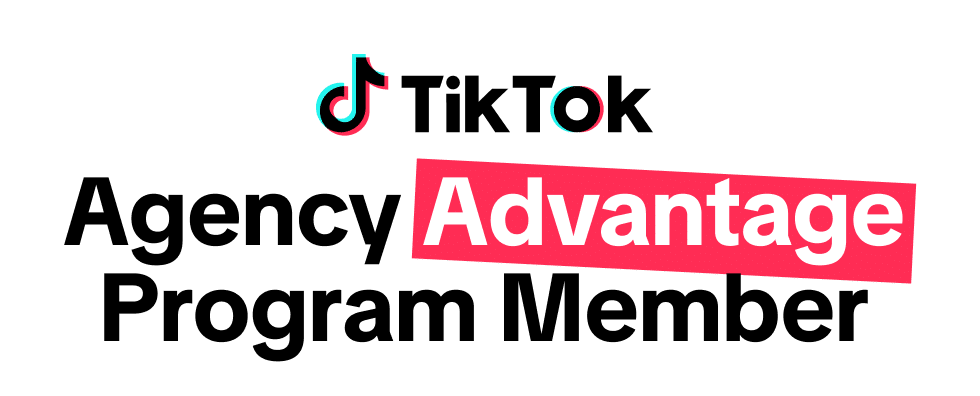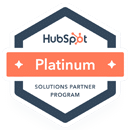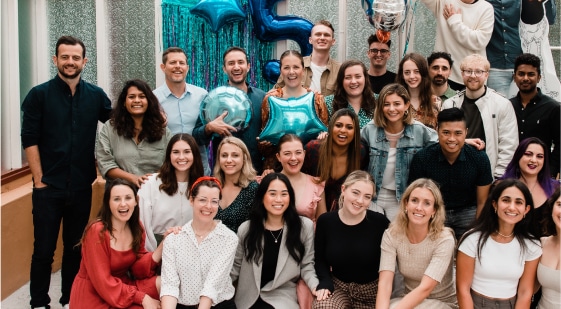How to Target Your Audience Online
Episode Description:
The way that we can target our perfect customers has changed radically, and what worked a few years back is likely to not work today. Large platforms like Google and Meta have changed how they collect audience data, significantly affecting how you reach and engage with your audience. In this episode, Host James Lawrence talks with Rocket Agency's Commercial Director, David Roberts about the recent changes in digital audience targeting and how to connect with your target market effectively.
Key Takeaways:
- The evolution of Google Ads: From search to audience targeting
- How to leverage Google's data for effective marketing
- The power of affinity and in-market segments
- AI-driven targeting in Meta Ads
- The rise of TikTok Ads
- How programmatic advertising helps target your digital audience
- The importance of content marketing in effective audience engagement
- How connected TV helps with audience targeting
- B2B and B2C best practices for building and nurturing your audience
Featuring:
About the Guest:
David Roberts is the Commercial Director at Rocket. He works closely with both key clients and prospective clients, helping devise tailored solutions for their digital challenges. Dave has been with Rocket since its inception in 2017, and previously spent five years at The Web Showroom, where he gained extensive experience in the CMS and tech space. You can follow David on LinkedIn.
Transcript
James Lawrence: Welcome back to the Smarter Marketer podcast. I'm here today with David Roberts. Dave, welcome to the pod.
David Roberts: Great to be on here, James. Thanks for inviting me. Long time listener, first time caller.
James Lawrence: Dave is commercial director here at Rocket, uh, hence, hence the, uh, very familiar and, , witty response to being introduced to the pod. So that works with our key clients and prospective clients to devise the best approach to solving their digital problem. He's been at Rocket , since day one in 2017.
And prior to that, , five years at the web showroom working in the CMS and tech space. So I thought, Dave, it's, , long overdue having you on the pod and an area. Where you have a really interesting perspective is using digital to find your audience.
So when I thought of that topic, I thought it'd be great to have you on. So , I think i'm what i'd like to steer the conversation first is to google and we have a weekly staff meeting at rocket And it was something that a member of our paid search team was a throwaway comment by him Wow, I reckon two years ago where he basically said Google Ads is no longer about search, it's about audiences.
And , I've been doing show my age doing Google Ad words and, and into Google Ads since the early two, two thousands into the, you know, the early naughties. And it had always been search driven, right? It was very much someone would come to someone like Rocket and you do keyword research.
How many people search for that product? We can get you there for an estimated CPC of of X. And it was kind of almost as simple as that. The comment made from our team member really made me think it's actually true in the sense of there's a broader Google ads product now, and it isn't just search, but even within search, often a lot of the good work being done is to, , move bids around and move strategy around, depending on the people seeing your ad.
The term itself. , I think it'd be good to talk Google. Ad targeting, because I do think that is something where people's perception of what Google ads is, is often very limited. And I think it is something that people have this connection of, yeah, Google ads or search ads, but it is so much more than that.
And this isn't a shilling for Google, but I think genuinely like the power behind the product and, and what it is these days and how it is best used.
David Roberts: Yeah. A hundred percent. Whenever I talk about , Google ads team is these days. I never focused just on that. That search component is a um, you know a multidisciplinary Skill set these days, you know covering search shopping display youtube discovery ads.
There's always this whole gamut of Great products the google releases and I think you know So, you know talk about finding audiences and how you can do that in google, I guess display and youtube are you know a good way to maybe kind of unpack that a little bit. So You Probably going back if you're talking into like 2019 or 2020, you know , running display ads, remarketing ads, , display prospecting was a quick way to, , burn a lot of money for, , not a lot of results.
Um, it was something that us as performance marketers would steer clear of, but as I think as Google got much better in knowing your digital audiences, um, it becomes a much more powerful tool.
James Lawrence: I think this is often something that people.
Don't connect the dots on, which is Google knows everything about us. Google, you know, probably 30%, 40 percent of the Australian population are on Android phones. Most of us using Google maps, many of us using YouTube. Most of us now have a Google account because we're accessing Gmail or YouTube or whatever it might be.
And as a result, Google is building up these incredibly rich. Portraits of us as users, they know what websites we visit, they know geographically where we are, they know if we've viewed an ad, if we then go into a retail environment, they know what music we're into, they know if we're buying a house, if we've sold a house, they have all this data, which then, I think Dave, where you're probably going with it, is then how we as marketers can access that data to then get that information.
build up really interesting and relevant audience segments. Exactly right. So
David Roberts: it has all of that super powerful demographic and behavioral data on us as prolific internet users. Um, so it can very much tailor, it knows what we're interested in, where we're at, our lifestyle stages, um, as you mentioned, and it's also got all of that.
Search intent data as well. Which I really love. You know, one of the great features. I love when we're talking about audiences. The is the custom intent audiences, um, timing feature available in Google. So you can now say, Based off, , a particular keyword that maybe James has, , entered on Google and websites that these people have visited or competitors websites or mobile apps that they've gone to, can you build me out a cohort audience, which kind of match, matches these things.
So, if I'm looking to sell a car and I've been to carsales. com or CarMoll, you know, any of these kind of sites, you can start building out an audience. , it's never directly to that person. Obviously, there's privacy around that, but Google could build out good cohorts of people who match certain segments that we can plug into the system.
And that then allows us as marketers and working with our brands to say, let's show this display ad to this cohort of people. Let's show this cohort, some YouTube advertising, , or whatever it may be. So it's a really powerful tool to unlock all of that big data that Google has on a more bespoke level, , from a brand standpoint to start getting our message in front of those audiences.
I think
James Lawrence: This is where the creativity comes in, right? If you're in a, an area where your audience is very niche, very hard to find, we can build up audiences of people that have searched for. In aggregate have searched for your five biggest competitors, or if you're trying to hit professionals in a certain segment, people that have been to the industry association website or been to the main trade publications or search for those products, um, I was doing a presentation, , for a client in a particular, , trades.
Adjacent space and in market for their particular product wasn't perfect So you build up a bucket of users who have actually searched in google search for their particular product or service And then show ads to those people as they jump onto youtube or you know browse around the internet yeah, very
David Roberts: powerful and it'd be you know, so just see how this all plays out into the future as well because Whilst this sounds really powerful now, I'm sure in time it probably wouldn't even be a feature that we'll use.
Now when you look at, um, when you look at Meta, historically you had all of those powerful interest based targeting mechanisms in the platform, which was one of the differentiating factors of Meta. To Google back then, you could say, Hey, I want to target people who with income of X and Bridgeton X, Y and Z.
And as kind of privacy laws change, a lot of those interest based targeting mechanisms get removed from the ad platform and it starts to move into more of a big day, AI models. So we've met our advantage plus, um, and it's just basically using. , aggregate data and its algorithm to find users for you.
So you just say, these are the people I want to buy or get my want to buy my product or get my advertising in front of and I'm sure with Google, it's gonna be a very similar model where it's probably less input from a, um, from a digital specialist standpoint. And then that's when your creative becomes, , the key driving performance in terms of getting results.
James Lawrence: Yeah, that's it. It's sort of interesting. Because, like, as you touched on, that was always the knock on Google is that Facebook has this incredible targeting capability, household income, particularly in North America, where you get access to data, political persuasion, all these kinds of things with all the Cambridge Analytica business and the development of the Google product, Facebook, , And particularly with the interaction with iOS 14.
Facebook went through this phase, and I think of a lot of campaigns, particularly ones that were set and forget, kind of stopped working as well as they once did. And there was probably this lull, but I think it's been really interesting for us with, there's all this noise that TikTok, you know, is killing Google, is killing Facebook rather, Meta's dead.
I was presenting recently, Some kind of top level data and Facebook still has 16 and a half million Australians accessing the platform on a monthly basis. They're accessing it for less time than TikTok. TikTok, the last data we had was less than 10 million Australians using it, but obviously growing very heavily.
But as an agency, I think we probably from a paid perspective, see our clients getting better results from Facebook. And they do it from TikTok. Um, And to your point, like a lot of the new targeting, more of their kind of algorithm driven targeting capabilities in Facebook and Instagram are actually working really, really well.
David Roberts: Yeah, yeah,
James Lawrence: yeah, absolutely.
David Roberts: We've definitely seen , some really interesting case studies , on Advantage Plus with a few of our clients there. , it's a shifting dynamic all the time. So it's just about where the right place to be is
so, um, James, I'd be really interested to hear your view. , I mentioned things I like, like customer intent audiences , on Google. , have you seen anything yourself? . What other targeting mechanisms have you seen on Google that you like?
James Lawrence: In preparation for today, I brought up, um, we have access to all the different ways that you can target. An ad within the Google product stack. And so I brought up three spreadsheets just, I think, just to add a little bit of kind of real world, , storytelling, , to the data. So in terms of demographic, like, obviously, well, maybe not obviously, but you can target people based on geography, age, gender, but within Google.
It gets to a point of education, kind of level of education. You can target that way. They do have some pretty light employment type stuff, which is the company size, whether they work large employer, small employer. And then certain industry, construction, education, finance, healthcare, hospitality. It's definitely not LinkedIn, which we'll get into shortly.
Home ownership status, whether you're a homeowner, whether you're a renter in a relationship, married, and then parents and parents of children, six to 12, zero to one, four to five, you build up some pretty good demographic data within Google. And then obviously you can up weight. Uh, what you're willing to bid in Google search ads for that, but you can also then target users in YouTube display, etc.
Um, in terms of, I think in markets one, which is really, really interesting and there are some limitations that basically Google had displayed Gmail discovery, search, shopping and video and some of these, um, segments. Aren't available across all, but the majority are, but in terms of in market, there's often a misconception that it's only B2C.
There's lots of really good B2B. I think there is one, for instance, in our space, there's one of SEO services, but I'll just yell out a few of them. And I think users, if they want, they can reach out to us for more information. But if you're in kind of fashion, there's running apparel, yoga, apparel, backpacks, costumes, eyewear, formal wear, brighter, whether it kind of goes into that level, level of granularity in cars, they basically have every single.
Manufacturer is its own in market audience.
David Roberts: I believe it's a big one that they have. So looking to go on a trip to Paris or 100 percent new cars,
James Lawrence: used
David Roberts: cars.
James Lawrence: There's probably about 100 different
David Roberts: services in
James Lawrence: this in product for various SAS products, CRM products. And that's all accounting services. 100%.
That's a big misconception. You have marketing services, SEO and SEM services, financial services, um, CRM, enterprise software, cloud storage, web services, domain name registrar, like it's, it's hundreds of different in market. So consumer electronics, everything you could imagine. So I'm kind of scrolling down.
This spreadsheet is over. What I'm looking at here. Yeah, there's like just under 800 sessions that you can build an audience of based on those people being in market for that product. And I think if you look at, if you remember that Google knows everything we search for all the websites we go to, it builds up a really accurate portrait of whether someone is interested.
Um, in those types of products or services, and then they have the concept of affinity, , which is very much, I think, an old school marketing, TV, advertising type readers and,
David Roberts: um,
James Lawrence: yeah, that's it and whatnot. Yeah, 100%. um, 150 different affinity segments. And as you said, like frequently visit salons, food and dining, cooking enthusiasts, pet lovers, book lovers, e sports fans.
I know, um, in an area where you've got a affinity segment for you, I think to your point before, hence the importance of understanding the buyer journey, like what is that journey that your customers go on, and then you can target advertising to them at the right time. And it's
David Roberts: quite funny
James Lawrence: on the affinity
David Roberts: audience as well, because I think a lot of brands, this is again, Um, maybe an area which is underutilized.
Don't necessarily know what the affinity segments are for their particular audiences. We work with a interesting FinTech product . , we doing advertising , on qu in there, which is a really, it's a good tool. You can put the, you can put the pixel on, on the website and starts showing you trending keywords from websites, and basically built up a picture of affinity audiences.
And one of the interesting takeaways from that was that. , there was a really over indexing audiences in terms of people who, , were into the NRL and NRL tipping or indexed really, really highly amongst their particular audience. So again, that would be an affinity audience which could potentially be leveraged, from this particular business.
Yeah, it's really
James Lawrence: interesting. Hoping the listeners that if you previously kind of felt. Google ads was search and maybe a bit of remarketing and retargeting to the side of it. It's definitely not how we're using it as an agency. We definitely think audience first, and that doesn't mean that search won't be still a huge lever for , certain clients in the space, but , it does come down to that push and pull marketing, right?
Where if you tapped out in search or if people don't really search for something, the product or service that you have, but you have a really rich idea of Your prospective customers, then you need to take the message out to them, right? And this can be a highly effective way of doing it.
David Roberts: Yeah, it can also be more cost effective to a certain degree as well. In terms of getting the message out there. And Google can be. A, uh, somewhat cheaper channel, say, compared to like, if you're in that B2B mindset, you think you can only advertise on LinkedIn, um, which can get quite expensive from a CPM standpoint, you can certainly get some really valuable, , impressions using, you know, these types of audience, , segmentation techniques with your audience on Google.
Good
James Lawrence: point. Um, what are you seeing in terms of meta? We've touched on it a little bit, but like the kind of big changes there. What's working? What's not working? Misconceptions out there in the market? Yeah. Yeah. So I
David Roberts: think, I think the slow move away from interest based targeting in meta is definitely an interesting one.
, it's hard to talk about meta without mentioning TikTok in terms of the shifting demographics. , speaking to a lot of businesses, um, knowing different cohorts, which work well on Meta. , I think it's very reasonable to say you've got a much older, you know, more engaged demographic, which is likely to convert on the Meta platform.
, working with some property clients, you know, it still works really well, particularly for people looking to target you have a 45 crowd across kind of Instagram and Facebook, they have a much higher propensity, , to convert. Um, I think you were looking to get into the GMC market.
It's just not the platform to be on anymore. ,
James Lawrence: , I was doing some research recently on that and, , this doesn't include under 18s in TikTok's numbers, but it shows that, , , 38 percent of users at 18 to 24 in TikTok.
And then about 70 percent of TikTok users are under 34. Yeah. Which kind of speaks
David Roberts: to that, right? I think the big stat is really time on platform as well. So whilst you like, you might count as being a logged on user in these kind of high meta numbers. I think the time on platform last time I looked was like four to five times greater.
On tiktok, so it's a much more engaging platform. In that sense, but yeah going back to your initial point What what are we seeing on meta? I think Like obviously the move into more AI driven targeting segments is really big and we'll see more and more of that um coming along Then it's you know, just like google.
It's the use of , first party proprietary data,, whenever possible um trying to get proper conversion tracking happening i'm using metacapi I think is extremely important and then it's just about getting good at creative on the platform So if you can get you know Good at creative and it's relevant to a demographic on Instagram or Facebook.
You have a high chance of success
James Lawrence: The reality is is that if you have a really clear idea of who you're targeting You then will be much more segmented in terms of The way you run your campaigns in Facebook and TikTok in Google display and YouTube and it's it's no exaggeration in terms of the impact that having creative that actually resonates deeply with an audience segment and I think it prevents a spray and pray type approach I think until you properly understand who you're trying to target it becomes very easy just to put a piece of creative out that you think is good just that you'll never get the results than if you actually segmented up and put creative in front of people that's highly relevant to them.
A hundred
David Roberts: percent. A hundred percent. That's, that is the key to success in that people don't want to be sold to either. They want to be engaged. They want to be entertained, particularly on a social platform. So you've got to have that message, which is going to stop someone mid scroll. It's going to give them something interesting to think about.
It's going to give some sort of emotional connection to your brand. And you know, that's the key to success. Um, the other point I was going to raise, I guess, just more from an agency standpoint with Meta is just the interplay Cross channel in terms of how it works. And, um, you know, metal always have over inflated numbers in terms of conversion data in platform.
Some people like to rely on them. Some people don't. Some people , don't think it's a great platform. But I think time and time again, when we look at the overall spans into say prospecting campaigns. And how that has , an uplift in the overall, , marketing efficiency ratio for a particular business.
There's nearly always a positive correlation between spend in platform, on social, in particular, you know, meta, which is where the bulk of advertisers still sit. Um, you'll see increased spend here. Resulting in just more conversions across these other channels.
So I'm still a big believer in the platform. So much of the environment changes. I know you can still reach good audiences, put a good message there. They don't convert on the platform, you know, things like that. I think lead generation ads are really worth time in platform work. Yeah, it's just that work.
But you certainly can get, the message out in front of my key audience and then hoping they'll convert later down the path. You definitely see a positive correlation there.
James Lawrence: That's it. Yeah. Then so insanely gen eds don't work. They definitely work from a high conversion rate, but then generally to say all that they're terrible.
Um, and it's really interesting because I think if you've spoken to most experienced marketers or digitally savvy marketers or agency people to three years back and said, what do you think of Facebook reporting versus? Google Analytics reporting. Everyone would kind of be very dismissive of the Facebook reporting and say like your GA is your kind of, it's your bible, that's the thing to rely upon.
But I think it's definitely becoming much more apparent that they're Both showing different numbers based on the way that two very different platforms synthesize data and GA for this movement towards data driven attribution, all the privacy issues that we have it's important to stress that the data you say the numbers you see are often their estimates.
They're not actually accurate. And there is , Lots of theory and lots of studies that kind of show that you GA4 will often over inflate the last click or the clicks very close to the last click bottom of the funnel paid activity and whether by design or because it's almost impossible to measure this stuff, a lot of the top of the funnel stuff is very difficult to measure or gets underweighted.
So I think we've become much more. Flexible and kind of looking at what Facebook has to say, looking at what Google has to say, trying to get other data points, trying to get, you know, better heard of us data, better, um, market research to actually truly build up a picture as to what's working and what's
David Roberts: not.
Yeah, there's always that element, you have to trust your gut a bit as well, you know, what you think works. So I always encourage people to, see what's going on down here and, ,
James Lawrence: make a value call. Yeah, that's it. We're definitely moving away from, um, I will make every decision based on data.
, it's a really. Good way to make really bad decisions. So it's kind of be data informed, um, but allow it to balance with actually, but like that is not a bad thing. And we're very happy , to challenge, um, business owners and marketers that say they're going to make every decision based on data.
Cause often it's a pretty flawed way of going about things in terms of Tik TOK, I guess anything else, like I think you're right, like demographically, it's definitely skewing younger, but like all these platforms, , they get older as always older. Yeah,
David Roberts: I'm 41. I'm on the platform. Actually, I really like the content, you know, lots
James Lawrence: of older content creators.
So yeah, TikTok ads may be worth just touching a little bit. I mean, it's kind of a similar variant of what's. What's
David Roberts: the positive, , from what we see, it's quite cheap. So some marketers can be kind of slow to move, you know, particularly bigger brands are like, how do we get on TikTok?
What's the right type of content? How do we feed the content machine on there? And there's just often, People put up these kind of barriers to entry to actually getting on the platform, but you don't necessarily need to do, you know, too much to actually get on platform as a whole, you know, our, digital team can talk to you about different options in terms of how you can use content creators or your own content or whatever it may be to actually just get advertising on the platform.
, but what we do see is very cheap CPMs because it's definitely not as competitive from an advertising standpoint. , so that's a tick number one that I like about the platform. It's cheap. It's a great way to drive. Um, number two, what I like about it is that it's kind of got that YouTube element in the sense that you're advertising is both.
Audio and visual so people will typically scroll, you know, Facebook Instagram often sound off is I guess the go to For many people who are using the platform, but tiktok is invariably, an audio driven platform So you have a more you know, more opportunity to engage from an advertising standpoint.
So I really like that about the platform as well. So , when you're talking cheaper costs, , more ability , to engage, , with your audience, I think , that's two really good ticks in terms of why you should be on the platform. Obviously it's got increasing, , market share all the time.
It's got good, it's got good dwell rates, um, in terms of platform usage, and it's just going to, it's just going to keep growing in terms People on the platform and eventually it'll get to a point like meta where it probably gets saturated from an advertising standpoint and diminishes from the usability of the platform, but but I guess as marketers, um, We see it being underutilized.
Um, and it's got lots of scope for brands to get on there It's just about not being afraid um to a certain degree and you have to walk away from your brand identity because I think if you don't have tiktok driven content, to a certain point. Yeah, you're not going to work, but you can't just go like many brands who just speak up.
Here's my remarketing ads from display. I'm going to track them onto, , Facebook as well. I'm going to track them onto TikTok. That's just not going to be 100 percent which works. Yeah, that's
James Lawrence: it. Um, I want to move the conversation now towards programmatic, which I think is also an area, probably a recurring theme here, where I think a lot of what used to work five years ago or what didn't work five years ago, isn't necessarily the same now.
And for marketers, Particularly marketers that might have worked bigger end of town, say five years ago, the word programmatic is somewhat sometimes come with a pretty dirty kind of connotation, but I think good to talk programmatics.
So maybe just quickly. Talking about what it is and then potentially talking about maybe an example. I think on cost is a good one. Um, just as to how it works.
David Roberts: Yeah,
James Lawrence: yeah. So
David Roberts: programmatic advertising buying is just another way to buy, , ad inventory.
, I don't profess to be a media buyer, , but so I won't go into the details of how the various DSPs work or whatever it may be, but I think the most important distinction for marketers to know is programmatic is not just buying display inventory outside of the Google Display Network, which is.
Maybe how a lot of people used to or potentially still think about the platform. It's a way you can now access a far greater inventory of digital ad which is what really excites me about it. , you can now buy Digital out of home you can buy elevator you can buy I think probably most excitingly is, you know connected tv and uh Broadcast a video on demand.
Think about your, your KOs, , your template nine, now seven plus all this really kind of premium inventory on television, which used to be a super high barrier to entry when you're buying direct deals, buying TBC, you need to have super high level, you know, TBC level production. Massive ad buys , with the television stations.
Now you can buy on very small budgets, you know, with, you know, reasonable level, um, media production and get , your message out there. And I think why that's really important is that for many people looking at digital ad inventory, you get that kind of almost that switch off. Unless it's really great content.
People know that. The barrier is low for any business to advertise on a digital platform. So it's like, yeah, you see a Facebook ad, you see something, some remarking ads, and you're almost, you know, you're tuned to blocking a lot of it out unless it's really good. So it's like how much impact can it have unless it's been done really well.
Whereas. I think people don't necessarily know from a say connected tv standpoint you're buying premium inventory and people really trust that So if you're a brand going, hey, i'm now on here i'm advertising on um, uh on ko or whatever it may be That really pushes like it builds a lot of trust, you know for your brand a lot of people trust that going Hey, this is a proper business.
They're out there on tv. So it's a really good way You can actually build up your brand so you can buy that Inventory programmatically. And I guess how it's different to how it used to be is you now have all of that data and reporting, which can sit behind it as well. So when we're talking about audiences, something like one cast has a lot of really interesting, um, AI driven ways in which it can find your audience based off, pixels on your website and device IDs and ways in which , you can find your digital audience and report back on, where previously you just become looking at sales uplift from people who would watch, you know, segments.
James Lawrence: Yeah, that's it. Like we , when we speak to our clients about it, we'll use the analogy of, you know, If you're trying to sell fishing equipment back in the day, you'd try to get, you know, your ad showing during Rex hunt or something like that. These days, we're using all very similar techniques to what we've just spoken about with Google, etc.
So programmatically, using platforms like the Trade Desk, like QuantCask and other ones, we can, if we're B2B, Oracle have a database that feeds in. And then. We will only be serving ads to devices that are connected with that financial planner or that person that works in, you know, some obscure difficult B2B niche.
, you can plug in Flybuys data, Mastercard Visa data. There's all these different data points at Quantcast, which is a partner of Rockets. They have pixels on millions and millions and millions of websites around the internet, millions of apps. I think there's, I think second only to Google.
So they have incredibly rich data on. Who we are as users, similar to what Google has, and then to your point, Dave, You can find people that are interested in fishing and then just show them your ad when they're in ko or in nine now or Yeah,
David Roberts: you know they might be watching love island and there might be a ceo and that's my
James Lawrence: favorite show love island
Didn't deny it
David Roberts: We can do a separate segment about that if you like
James Lawrence: But it is kind of a um I think we've touched on earlier on, it's just, you're limited by your creativity, right? As to understanding technology, understanding the different audience sets that we have. And then, okay, well, what is contextually the best place to be showing creative to those people?
David Roberts: Yeah, that's right. So , I think it's just a. Maybe like on the on the agency behalf in terms of say, Hey, you know, these are new opportunities that you as a business can now leverage. You don't need shoot budget budgets and talking about transparency in the tools and how they work and where your media actually goes and, you know, and how it works.
And I think just by having those conversations with customers, you unlock a whole range of new potentials and new channels, but it all works within the. whole digital ecosystem and gives people what they like because people like digital because it is metric driven to a certain degree and you can still have a lot of that flowing back into reporting frameworks and having some really interesting data come through that you can make decisions on so we can find the right audiences we can report on or we can see how uplift works um you can see what placements we're getting i think it's all that is is powerful and you know i love it yeah yeah
James Lawrence: and it does feel like we've kind of gone from digital Meaning Google, meaning SEO, meaning Facebook and Instagram, and now connected TV, suddenly it's the main device in the house.
We kind of had that with YouTube, but it was always like, yeah, but are you really watching YouTube on the main device? Now people are, but it's also connected TV. It's literally the way that people are watching TV and then even outdoor advertising, right? As to when now programmatically buying outdoor advertising.
In really creative ways, shopping malls and, ,
David Roberts: bus shelters, lots of really good things you do. So if you've got a kind of a geo targeted campaign, , you can blast an area. And I know with Quantcast, I got again, , just amazing data where they have some technology where it can, Retarget people based off them having walked past that particular, , screen in a shopping center based off a device ID and a few other metrics saying, Hey, you know, James has walked past my side here when he gets home, I'm going to show him this TV advertisement as well.
So , the power of these tools always continues to amaze and that care industry is just always moving at a million miles. And it's just amazing. about, keeping up with all the possibilities and, , showing clients , how they can better leverage them. And again, what I love, like it doesn't cost an arm and a leg to get into these things.
We, we run a connected TV campaigns for clients and they're spending like five grand a month. You wouldn't, you know, never would have heard about that if someone was looking to buy, , actual TV on radio ads and the
James Lawrence: likes. Yeah. Yeah. It's unbelievable. , I think it'd be good now to just talk B2B.
Like what do you say with. Clients in complex spaces, very niche spaces, like , what are you saying there? Yeah, it's
David Roberts: always interesting one, right? So I always think that, I think, I think some marketers like to over complicate their marketing by saying. I'm a B2B marketer and my challenges are uniquely different to everyone else's where I don't know you can challenge me on this if you want James but it's I still think it's business to human in many ways like the things that work for a good B2C brand will often work for a good B2B brand there will be differences of course you know often with B2B search is less impactful um you know bottom of the funnel search because people aren't going to go I'm going to buy an enterprise CRM and just go through and Do a google search and convert on that where if you're looking for an emergency plumber you will it might be one click Two comparative quotes and away you go , but I think the key like from a marketing standpoint You still want to whether it's b2b or b2c you still want to build a great brand identity You still need to know your customers.
You need to know their pain points And you need to be able to Speak to the benefits of your business, product or service, in relation to those pain points, um, , social selling always works across both. I think , particularly in the B2B space, like seeing other businesses, which have leveraged technology X, Y and Z efficiencies, which have come into it, same as someone who might be buying a supplement and sees those same things, reviews.
All very powerful. There are a few kind of other areas you can support B to B like, um, some of the , aggregated sites like cap terror can be good for software comparisons or whatever. But I think those main things are building your brand, knowing your customers, mapping their pain points, having good advertising, being genuine, , as a brand.
These are all the key things which still drive, , good B to B growth. , So I don't like to kind of sort of put them in two different camps all too much Yes, you might have longer sale cycles and there's things like you probably need to have a more invested Say nurture strategy so putting good content out there and you're talking to your customers over a period of time So where we are effectively a b2b agency, we need to put out good content the old rule says that only one percent of your , market is in market for services at any point in time.
, so what are we saying to the other 99 percent who aren't, we want to be putting good content out for them. So when it comes time for them to be in market for our services, , hopefully think of us and, , bring us into a, tender pitch scenario, , or whatever it may be.
So there are some things you have to do from a nurture standpoint, but I still think a lot of the basics, whether it's short sales cycle or longer, , it's still all the same. You need to have a great website experience. You need people to navigate your site, you know, find out how the product works, um, all these things are going to be just as important either way.
So I don't know if you, you feel different.
James Lawrence: I think I agree mostly, I think there is this B2B is fundamentally different to B2C and I think it's because of what we think B2B is. We think of B2B as being the big seven figure purchase, big AARP system, CRN system, and we think of. B to C being the emergency plumbing example, when if Ali, our office manager, is buying toilet paper for the office, that's a pretty simple transaction, it's a decision panel of one, and it's a much simpler proposition than some, than a a husband and a wife deciding on which home builder to spend a million bucks with, so I think there's definitely truth to, but if we kind of go, let's think about the more complex side of B to B, bigger ticket items, I think often there's that level of complexity of stakeholders , on the, Decision making side with the panel.
It's five people. It's 10. It's 15 procurement. It's multidisciplinary versus one or two people in a private home.
David Roberts: . Um, you know, often we'll have that conversation with our B2B clients in terms of the ecosystem. So it's not all about driving conversion.
It's more about what is the brand perception? So we're out, um, we're competing in this RFP. How do we actually It's When people come through to do that validation check, how do we kind of put our best foot forward as a business? So the website needs to look great. We need to have good messaging, have good remarketing, which follows people around.
We're talking about people in culture. It's a great place to work and whatever else it may be. We've got good social ads, just talking about business case studies. It's all of this, where it's just about building up a really good impression about business. And I still think that's hyper valuable. It's huge.
James Lawrence: And like, I think it was re referenced on another episode of the pod, there was a Harvard Business Review study which looked at, it was purely B2B, and it was something like in 90 percent of B2B Purchasing decisions, the successful company was already in the consideration set before the business went out to market.
So if you're not already in that consideration set, when someone comes into market to buy the software or to be a new agency or whatever it might be, they might throw you in just as we need five instead of three quotes, but your chance of actually winning the deal is negligible. So , you have to be there nurturing.
I think that's true of on the B2C front. If you're selling a car, BMW markets to 20 year olds know they're not going to buy a car until they're 35 because most people aren't buying a BMW most months. So it's like when that time is ready to buy a luxury car, you've thought of BMW. So it's, I think any big ticket item you need to be warming up the market, putting more effort into warming up the market than bottom of the funnel.
I do think there is, , A context piece, which is, I think it's okay in B2B potentially to market on Facebook, remarketing, retargeting, but I do think it's more relevant to be marketing to someone contextually at a point when they're like, if you're watching the soccer at night, you might be more interested in your personal stuff than when you're on LinkedIn during the day.
But that doesn't mean you shouldn't. Yeah, people want to have that the
David Roberts: brands being positioned at the right time. I
James Lawrence: think that's right. I think I do think from a targeting viewpoint different though, which is we touched on earlier on. There's some very light Google targeting capabilities with B2B. My perspective is, is that if you're trying to build an audience of geotechnical engineers working in WA that work in big mining companies, very difficult to do that through Facebook, Google.
I'd be doing that through LinkedIn to try to identify my audience. Um, I think search can obviously be a good way of identifying if the, the query itself denotes that level of seniority. , otherwise. We're doing some pretty interesting stuff in programmatic using the Oracle database to look at matched IDs of people in very specific B2B roles, which I think is equally as effective as LinkedIn, but you probably need more budget to do it.
David Roberts: And I guess, the bigger town you might see, , on the B2B side, clients who are using CDP, so customer data platforms, that kind of unifying, you know, centralized repository of customer information, looking at different activity across line, which can help, , better inform that. Their account based marketing strategies as well.
So, clients that I see who are using, , CDPs and doing proper ABM. It normally top 100 ASX companies who can use these types of marketing technologies. , you don't see too much on, , I guess in the mid enterprise realm so much, people can often buy these things and they're under leveraged and underutilized.
Um, but I guess that's some of the differences you might say from a B2C standpoint is people have these various technologies that can be leveraged for more nuanced messaging. Again, it's right message, right time, and these platforms can help internal market agencies deliver those messages to those types of accounts.
James Lawrence: That's it. But the next point is an interesting one. We were talking before we started recording, and this is one that you wanted to include, and I think it is interesting because when I think of, , Targeting a prospect, I am thinking in an ad platform, how to find that person or how they find us through search, but producing great content and how that can help to actually find the right audience.
David Roberts: Yeah, absolutely. The old saying, no content is king. So like with any advertising, you want to engage, you want to offer really valuable information. It's about most businesses struggle to do it. So I think just spinning up a LinkedIn ad, just talking about some sort of, , USP proposition of the business is never going to , be enough.
And, I referenced rocket in this case. Like we love talking marketing, but this pod at the end of the day is to put great content out, um, you know, present company excluded to marketers in Australia. Hopefully we can give them good information.
They go, I like what James is saying. I like the guest said that he has on here. I like the way that the rocket talks and hopefully that helps influence their decision that when they go out into market, um, , that we might be part of their consideration mix. It takes a lot of time. Like you've got a, we've got an internal marketer, they're doing outreach, you're getting guests onto the pod, , you're investing a lot of your time as an agency owner to, to put this content together and you're doing webinars with, , the right types of, , publication networks like, , B and T and Mumbrella and ad news and all of this kind of content marketing, which is outside of the performance, I think is really what drives a lot of the brand led content.
Yeah, I think it's
James Lawrence: right. And it's something I hadn't, wouldn't have. Put it on my list of talking points, but it is true that. Creating content that impresses your ideal client inevitably gets shared and it gets shared to more of your ideal clients. So it has this kind of echoing effect of continuing to find more and more people that are the.
David Roberts: Yeah,
James Lawrence: and it's definitely stuff that can be
David Roberts: used, , business wide, like, so we'll have various episodes of the podcasts and you might speak to a particular client who has a particular pain point. I would say, Hey, look, James just did a podcast on, , X, Y, and Z. You might find it interesting.
So we're sharing, , our content again out to people, I guess, from a, , a more sales perspective. So you've got to spend the time creating , this. This level of content, I think for any business, it's not that easy to go out there and podcast or a YouTube channel or whatever it may be.
But I think it's putting the effort into, the best content you can possibly do as a business is ultimately what's going to help , move the needle. So , if your customers find interesting, they're much more likely to have conversations with you further down the track. It's a good point.
James Lawrence: Before we wrap up, just any other novel, miscellaneous, , probably more ancillary platforms, , we talked to Capterra, which I think is really good if you're in the software space. , if the space you're in exists in Capterra, it can be a really good place to advertise. We've had really good results for clients in the SAS space there.
Uh, Pinterest, I think, was one where we found.
David Roberts: Good, yeah, for clients in the residential space. We've got people who you know, , home led. I think Pinterest , can be. Fashion and
James Lawrence: lifestyle, good. Yeah,
David Roberts: One of the things , I made a bit of a list in terms of tips and tools because this conversation was about audience.
, so one of the, things that I often use, when we're pre sales in terms of, you know, what, what can you leverage to find out where your customers are or what's happening? And, things that we use like ad libraries can be really good. Facebook, LinkedIn, you can go in there, you can find any advertiser who's actively advertising.
And I think with LinkedIn shows historical ads as well. So, um, you've got to find out what your competitors said are doing the same. I think ad libraries are a great way to find out. What are my competitors saying from an advertising standpoint, Google trends can be interesting. So just, you know, it's a basic tool.
You can go in there, you can see differences. So think about topics within your industry, which might be, , trending forward. We always have this interesting one. Many years ago, back when the same sex plebiscite was kind of in the news at the time, obviously looking to pass. We had a client who worked in the jury space, um, and we did a lot of SEO work around same sex wedding bands, create all that happening.
So once everything got passed and more marriages from the cards, they were ranking number one for that and sold a stack of wedding bands off the back of it. Um, different tools like SIM, like SEMrush and SimilarWeb can be good in terms of just finding out, um, Simrush can show you, , ads that your competitors are showing different content pieces, content cap analysis, all that kind of stuff.
Um, this big tool called Mote, which is now owned by Oracle, which used to show you display ads. I think you can find that on similar ads again, social listening tools can be good, um, social media insights. For, , different interests or demographics, which performing. So again, like how do you, I think one of the things around your audience is what kind of messaging works well.
So when you're testing ads, looking through the click through rate conversions from different messaging pillars that you have out in market can show what's actually resonating with your audience. So that's a good little, like, I think most marketers, when you're working with your agency or internally, that's the stuff that you're doing day to day, but important to remember click through rate.
conversions, bounce rates off various ads based off content pillars out in market is really good. Um, and then the last tip I have as well, because we probably won't cover it today, but you know, we talk about offline market research and qualitative research can often inform your strategy immensely. And if you don't have the tools to do that, Pick up the phone and talk to your customers.
And like people just don't do that, right? People are afraid of telephones now. Gen Z won't answer their phone calls. Let's text message. But one of the most powerful things you can do is pick up the phone, have a chat to your customers, just talk about why they chose to work with you. And that's going to give you a good insight.
We certainly, as an agency, we've spent a bit of time recently doing a bit of market research into our customers. And I guess what we thought that our customers were buying when they were, or what their pain points were is, is quite different to what they actually are. You know, what we found out is they want, um, you know, one of the biggest bugbears is, , changes in account management or lack of transparency or not enough, , proactivity , from their agency, right.
Where you think it's as a performance agency, they're always about results, but it's these kind of other factors which, , greatly influence , what they're buying and what they want. So I think for any business or market, if you have time, whether it's a sales team or yourself, pick up your phone, talk to people, , find out What bugs them, you know what their pain points are, , why they chose to work with your business And that's going to give you a lot of information in terms of , what you can start talking to um with future prospects
James Lawrence: Nice one, mate.
I couldn't agree more. So dave, uh, you survived your first pod and we have the um, The question I ask of all my guests. Yeah, it doesn't have to be audience related It can be if you want it to be what's your one best piece of marketing advice? For an Australian marketer?
David Roberts: Trust your gut. I mentioned it earlier on. I think we can talk to a lot of agencies. We can get, we can talk to people on the c suite. People can feed us a lot of information, a lot of data points, but I think trusting what you think is the right thing to be saying to customers and where you think your customers are.
You're in that role for a reason. You know your audience. Trust your gut in terms of what you should be doing.
James Lawrence: Love it, Dave. Thanks so much for coming on to the pod.
David Roberts: Thanks, James



